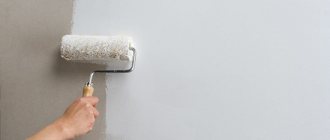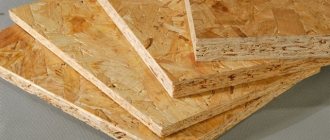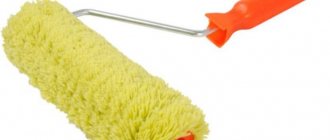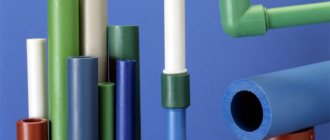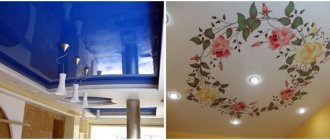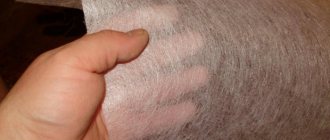Home » VAZ repair
Reading time: 9 minutes. Updated 08/04/2019
A situation often arises when, during the renovation process, a finisher encounters old paint coatings, which are problematic to remove, and he is interested in the question: “Is it possible to paint with enamel over oil paint?”, or vice versa: “Is it possible to paint with oil paint over enamel?”
The answer depends on the composition of the materials and their compatibility, and we want to talk about this in more detail.
The difference between oil paint and enamel can be of varying degrees.
Is it possible to paint with acrylic paint over oil paint?
The choice of one or another type of paint must be approached as responsibly as possible, since the durability of the coating, its aesthetic characteristics, as well as the ability to provide conditions for a person’s comfortable stay in the room depend on the solution to this issue. When choosing a paint composition, you should also consider whether this will be the first painting or whether it will be a repair of a previously painted surface. Many property owners who have decided to make cosmetic repairs to the premises of their apartments or houses are interested in the answer to the question: “Is it possible to paint surfaces that were previously painted with oil paint with acrylic paint?” It should be noted right away that you should not try to find the answer to the question posed among sellers of building materials stores or specialists who have worked their entire career with only one of the specified compositions. Most of these people may not even know from what initial components these paintwork materials are made, so they cannot draw a conclusion about compatibility. Having received an answer from them, the home master runs the risk of hearing a purely individual opinion and, as a result, making the wrong choice.
Characteristics of oil and acrylic paint
Before answering the question posed in the title of the article, it is necessary to talk in detail about the characteristics of each of these paints and varnishes.
Oil paint
Even in the very last years of the previous century, oil paints occupied a leading position in the coatings market. These coloring compositions were in demand everywhere; they were applied to any internal or external surfaces of premises for any economic purpose. The position of oil paints has somewhat weakened after the appearance of nitro enamels on store shelves. And after widespread production of water-dispersion coloring compositions was established, oil paints became less in demand compared to other paints and varnishes.
Nowadays, oil paints are used very rarely. However, many home craftsmen of the “old school” still strive to use only them, explaining their choice with the following reasons:
- Oil paints are low cost. As long as oil formulations differ from their analogues in more favorable prices, they will be in demand. Oil-based coatings are available to any buyer, regardless of the thickness of his wallet, which allows him to save quite a decent amount of money when painting large areas.
- Oil paints are resistant to moisture. They perfectly protect wooden, concrete and metal surfaces from the harmful effects of water. Can be used for painting both interior spaces and any exterior surfaces: house facades, roofing structures, pillars, fences, etc.
- Ease of use. There are absolutely no instructions required to paint any interior or exterior surface. All you need is a can of paint and a brush. Sometimes it is necessary to add a certain amount of solvent and mix the composition.
By the way, many home craftsmen who do not know whether it is possible to apply acrylic paint over oil paint opt for oil-based paints and varnishes. They explain their actions by the fact that the surface had already been previously treated with paint based on drying oil, which means that there is no need for additional surface preparation. Simply put, if such paint has already been used, it means that in order to avoid problems, it is not worth experimenting and, as a result, it is not worth taking risks.
Despite many undeniable advantages, oil-based paints and varnishes are not without certain disadvantages, the main of which are the following indicators:
- Small selection of colors. As a rule, in construction stores you can find oil paint available in only a dozen shades, which has a very negative impact on the possibility of developing a variety of design solutions.
- The coating has low strength. Cracks and chips often appear on surfaces painted with oil paint. Elimination of these defects is possible as a result of re-painting, which takes some time and requires financial investment.
- Oil paint fumes are toxic. The room in which painting is done using oil-based paints and varnishes is filled with a persistent odor that is unsafe for human health, so when performing this type of work it is necessary to organize effective ventilation. Until the surface to be painted is completely dry, no person is allowed to remain in the room.
Oil-based paints and varnishes are made from drying oil. In turn, drying oil can be either natural or 45% consisting of synthetic additives. To give the paint a particular color shade, mineral pigments are added to the drying oil, after which the composition is mixed to the consistency of a homogeneous viscous mass.
Acrylic paint
Let's look at the advantages and disadvantages of acrylic paint. The advantages of using acrylic paint compositions include the following characteristics:
- Ecological cleanliness. The composition of paints and varnishes of this variety is completely free of components harmful to the human body, which in our time is considered a very important characteristic. Even during direct work with paint, when painting a particular surface, the painter does not smell.
- The widest range of color shades. Currently, acrylic paints on the paint and varnish market are represented in a wide range of color tones. Even if the desired tone is not on the counter, the paint of the color the buyer needs will be prepared directly in his presence, by mixing two or three paint samples of different color shades on a special machine. This opportunity provides the implementation of any design developments.
- High degree of resistance to moisture, ultraviolet radiation, and temperature changes. This allows you to use acrylic paint to treat both internal and external surfaces. Also, it should be noted that the layer of acrylic paint laid on the surface to be treated is vapor-permeable, as a result of which there will be no accumulation of moisture on the walls.
- Durability of the coating. Compared to its oil counterpart, acrylic paint will last at least 2 times longer.
The only drawback of acrylic paint is its high cost. What will you do? You have to pay for high quality Acrylic paints consist of an acrylic composite and water. After applying the paint, during its drying, moisture evaporates and the constituent components polymerize, resulting in high strength of the layer.
Types and technical characteristics
On sale you can find several types of coatings made with cellulose ethers. The most popular are NTs-132 and NTs-25. These enamels are available in several dozen colors. Used for painting wooden and metal surfaces, mainly indoors. Dry in 1-3 hours at room temperature. To dilute them, solvents 645, 646 and others are used.
After drying, they form a thin film on the surface. Apply in several layers (from 2 to 5 and 10). Manufacturers even produce nitro enamels NTs-132 separately for application with a paint sprayer (marked with the letter “P”) and with a brush (with the letter “K”).
The following nitro paints are more resistant to moisture and atmospheric factors: NTs-11, NTs-5123. Enamels are used for painting metal and wooden surfaces used outdoors or indoors. After applying the nitro paint, the coating dries in 1-2 hours. Reducing viscosity is achieved using solvents 646, 647 and others. Nitroenamel is applied to the surface in 1-5 or more layers. After painting, the surface does not change its appearance for 3 years and can be used at temperatures from -40 to +60 degrees Celsius.
The main types of nitro paints sold in construction supermarkets:
- aerosol nitroenamel (in cans);
- nitrocellulose enamel (in cans).
All nitro paints are one-component and completely ready for use. Any nitro enamel contains solvents that evaporate as the paint dries. It is recommended to work with this type of enamels at positive temperatures and air humidity of no more than 70 percent.
How to apply acrylic paint over oil paint?
And now, knowing the main advantages and disadvantages of each paint, taking into account the peculiarities of their chemical composition, we will answer the main question: “Is it possible to apply acrylic paint to oil paint without completely removing its layer?”
If the layer of oil paint adheres firmly to the surface, does not peel off, and has no cracks or chips, acrylic paint called “Master-121” can be applied on top. This coloring agent is a universal composition, which is characterized by the highest degree of adhesion to even the most even and smooth surfaces.
Using “Master-121”, you can be completely confident that acrylic paint will reliably adhere to a layer of oil paint. This option is the simplest solution.
Acrylic paint adheres very well to surfaces previously painted with oil paint. However, so that acrylic paint does not begin to peel off from the oil base after some time, the surface to be painted must be treated most carefully. During surface preparation, it is necessary to perform the following types of work:
- Thoroughly sand the surface on which the acrylic paint will be applied using fine-grit sandpaper.
- Next, dust, dirt, and remaining abrasive material should be removed from the surface, and then degreased. As a degreaser, you can use a solution of soap in warm water.
- Wait until the degreasing solution dries completely.
- Paint the surface to be treated with several layers of acrylic paint.
Having completed the entire range of preparatory work described above, some home craftsmen still doubt the reliability of such a connection. In order for acrylic paint to adhere well to a surface previously painted with oil paint, the coloring agent must be diluted with water in a 1:1 ratio.
Applying varnish over paint
So, we figured out whether it is possible to paint over varnish and how to do it. However, you often have to deal with the need to apply varnish to a painted surface. It should be said right away that it is not only possible to perform this procedure, but in some cases it is even necessary.
The fact is that a transparent varnish film protects the painted surface from various negative environmental influences, so its use will increase the service life of the painted surface. Often home craftsmen are interested in whether it is possible to apply varnish to acrylic paint?
Acrylic varnish on water-based paint
A protective transparent layer can be applied to almost any paint and varnish material. However, it must match the paint. For example, it is advisable to use acrylic varnish for acrylic paint.
The correct selection of varnish will ensure the highest quality and durable coating.
Differences between materials and their compatibility
Terminology and composition
First you need to understand what enamel is and how it differs from paint. Speaking strictly scientifically, real enamel has nothing in common with paint and varnish products. (See also the article Types of finishes: features.)
Enamel is a glassy coating that consists of quartz sand, alkali metal oxides, pigments and other components, which, after being applied to the surface, are subjected to heat treatment and form a high-strength wear-resistant protective layer. An example is enamel dishes, bathtub coatings, the top layer of some types of ceramics, tiles, etc. Natural enamel should not be confused with enamel paint under any circumstances.
This is what real ceramic enamel looks like.
Enamel paints are a narrow segment of paint and varnish coatings that are highly durable and consist of a dispersion of pigments, fillers and various additives in a film-forming substance, the role of which is most often played by varnish, alkyd resin or other substance with similar physical and chemical properties.
Enamel paint is often applied to batteries.
Oil paints consist of natural, synthetic or combined drying oil, in which all the same pigments, fillers and auxiliary target additives are dispersed. Modern types of oil paints are most often mixed with glyphthalic, pentaphthalic and combined drying oils, as well as oxol drying oil.
Oil-phthalic coating is often called enamel.
Important! As you can see, enamel-like materials and oil-based compositions belong to paintwork materials, and there is no clear difference between them. It is quite difficult to say how oil paint differs from oil-phthalic enamel.
Moreover, many manufacturers strive to create the appearance of a rich assortment and assign certain names to their products, based on the qualities that need to be emphasized. So, in order to highlight the strength or special shine of its product, the manufacturer calls it enamel, although this product has nothing to do with enamel as such. Of course, the price increases along with the growth of pathos in the product name.
Example of a polymer product.
The first enamel paints arose after pentaphthalic drying oil began to be modified with alkyd resins, as a result of which a more durable and durable coating appeared on the market. In order to somehow distinguish it from others and focus on increased quality, the material was called enamel, so that everyone would understand that the product is stronger and better than simple paintwork materials.
We can say this: material based on pentaphthalic drying oil is called enamel, and material based on boiled linseed oil (natural drying oil) is called paint. If you look at the labeling of cans, you will notice that often all enamel cans have the index PF (pentaphthalic), and all simple ones have the index MA (oil). There are also primers with the designation GF, which indicates glyphthalic drying oil in the composition.
Drying oil based materials.
Important! To identify the real differences between enamel compositions and conventional ones, it is necessary to analyze the composition of these materials, especially the film-forming base and the solvent on which they are mixed.
Types of enamel paints
To talk about the compatibility of materials, you need to understand what enamel materials exist. Let’s say right away that there are so many of them that it will be problematic to cover them all without exception. .
We will name the main ones:
- Nitrocellulose (NC). Consist of cellulose nitrate, pigments, additives and solvents. They are mainly applied to metal, concrete and wooden surfaces. Available in cans and aerosol cans, they are distinguished by the characteristic pungent odor of acetone and are incompatible with other formulations without special preparation;
- Organosilicon (SO). They are applied to almost any coating and material and are characterized by heat resistance, moisture resistance and high wear resistance. Compatible only with cured acrylic coatings;
- Pentaphthalic and glypthalic (PF, GF). They are a type of oil paint based on synthetic and combined drying oils modified with alkyd resins. Compatible with epoxy, alkyd-urethane and acrylic compounds;
- Acrylic (AK). These are water-dispersible polymer latex mixtures that are compatible only with water-soluble materials, but can be applied to old coatings of almost any composition with appropriate processing and preparation;
- Urethane (UR) and alkyd-urethane (AU). High-strength, wear-resistant coatings that can be applied to oil and pentaphthalic bases, and they are also compatible with epoxy compounds.
Table of compatibility of various paints and varnishes with bases and old coatings.
The list can be continued for a long time, but for this it is easier to look at the special material compatibility tables that can be found on our website. An attentive reader could already have found the answer to the question: “Is it possible to paint with oil paint on nitro enamel?” - in no case, since nitrocellulose materials simply coagulate in other solvents, and when applied they form bubbles and swell. (See also the article Spray gun for painting: features.)
Don’t be surprised if you see that some sellers classify fire-retardant paints for metal Polistil as enamel, because even Zinga electrically conductive paint is sometimes included in this category.
Ways to solve the problem and additional tips
Carrying out repair work requires significant material investments, and therefore the desire to save is completely justified. Below we will tell you how to refuse to remove the old coating and finish the room yourself.
The composition of the water-based emulsion is similar to wood putty. Based on this fact, the old coating must be cleaned using sandpaper before applying enamel. After carefully removing the top layer, the surface must be treated with a deep penetration primer, which will significantly improve adhesion. At the final stage, the enamel should be applied to the old water-based paint.
5 / 5 ( 1 voice )
Applying alkyd enamel to oil paint
Repainting window sashes is often done using the old base.
Important! It should be understood that the technology for applying paintwork materials involves complete cleaning of the base from old coatings. This is a condition for the most durable, long-lasting and beautiful protective layer that will fit well and serve for a long period of time. The success of the event depends by 60 percent or even more on the degree and quality of foundation preparation.
Now we will tell you how to apply enamel to paint with your own hands, and for convenience we have compiled instructions:
- We check the surface of the old coating for strength. If it peels off and comes away easily from the frame, it is best to remove it. If the coating is durable, then it should be washed from dirt and dust and sanded with coarse sandpaper;
We check the old finish for strength.
- After this, sweep away the dust and shavings, and wash the surface with water and soda. Don't forget to rinse the solution thoroughly with warm water. After this, wait for it to dry;
Add baking soda to the water and wash the windows.
- Open the jar, slightly dilute its contents with solvent or white spirit (1 - 2%) and mix thoroughly;
Lightly dilute the product with white spirit and mix.
- We apply the material in three thin layers, each new layer after the previous one has completely dried. It is better to apply the second and third layers thicker, without thinning. (See also the article Facade finishing - types.)
Carefully apply three layers of coating with a brush.
Important! Wear a respirator, gloves and safety glasses; alkyd coatings are toxic, especially during application and drying.
The process of painting over varnish
Surface preparation
The peculiarity of applying paintwork over varnish is the preparation of the base. First of all, you need to make sure that the old coating is securely attached to the base and is not peeling off or crumbling.
The work is performed in the following order:
- First of all, the surface is sanded with fine sandpaper until it acquires a matte surface.
- Then the cleaned surface is treated with a degreasing liquid.
- After this, a special primer is applied to the surface - a primer for painting to improve adhesion. The composition is distributed in a thin layer over the entire surface. For these purposes, you can use a brush, roller or spray. As a rule, the primer is applied in two layers. More precise information on how to work with the primer is contained in the instructions on the packaging.
Advice! In order not to apply paint and varnish material over the varnish, the old coating can be removed using a hair dryer and a spatula.
In the photo - sanding the surface
Is it possible to paint with acrylic paint over oil paint?
Acrylic and oil paints are used to paint both the exterior and interior of a building. Situations often arise when you need to paint with acrylic a surface on which there is a layer of old oil paint. Is it possible to combine these two completely different colors? To answer this question, it is necessary to understand in more detail the properties of both types of paint and varnish compositions.
Features of oil and acrylic paints
Oil base
Just some 20-30 years ago, oil-based enamels completely dominated the market. Such solutions were used both for painting facades and indoors. The first serious competitor to oil was nitro-enamel, and the dominance of oil-based compositions was finally shaken after the start of mass production of water-based paints, primarily acrylics.
Oil-based paints and varnishes are produced on the basis of natural drying oil or its synthetic analogue mixed with mineral pigments. To obtain paint, its components are ground until a homogeneous mixture is formed.
Today, oil-based paints and varnishes are used infrequently, but sometimes there is still a need for them, for the following reasons:
- Affordability allows you to paint large areas with oil paints at the lowest cost. Low cost is the main factor in the popularity of the oil: as long as prices are low, the demand for such solutions will exist.
- Resistant to the negative effects of moisture. The oil protects wooden, concrete and metal surfaces from moisture penetration into their structure.
- Often oil paint is chosen because the surface has already been painted with drying oil. Not all home craftsmen are aware of the possibility of applying an acrylic composition to such a surface, and therefore choose the simplest option - buy an oil solution.
- The application of this paint and varnish material does not require any special knowledge or skills: you just need to dilute the composition with a solvent and stir.
Oil solutions also have serious disadvantages that limit their use:
- Not too many colors to choose from. Most often, stores have up to 10-12 shades in their assortment.
- Low coating strength. For this reason, the painted surface needs regular updating (at least annually), which will require additional financial investments and labor costs.
- Toxicity of solutions. This category of paints is characterized by a specific and very persistent odor. If painting is carried out inside a building, you will need to organize high-quality ventilation. At the same time, while the paint is drying, you should avoid staying indoors to avoid poisoning from toxic fumes.
- Long drying times. It will take at least 24-48 hours for the treated coating to dry completely. And this is under ideal environmental conditions (appropriate levels of humidity and temperature, as well as the presence of ventilation).
Acrylic base
Compositions based on acrylates are characterized by the following advantages:
- Compared to oil paints, acrylic paints are much more environmentally friendly because they do not contain organic solvents. Since acrylic solutions are based on water, such paints do not have a strong odor.
- Huge selection of colors and subtle shades. It is possible to order the desired color directly in the store: the composition will be made in a special machine right in front of the buyer.
- Resistant to moisture, ultraviolet radiation, temperature changes, vapor permeability. As a result, acrylic can be used both indoors and for painting facades.
- High surface strength. The coating becomes harder as it dries (water evaporates).
- Quick drying time - just a few hours. Moreover, some compositions can dry in just an hour.
- Long service life of the coating. Compared to oil paint, acrylic paint is at least twice as durable.
The only significant drawback of acrylic is its cost. However, quality is worth paying for.
Alkyd paint characteristics
Solvent-based paints and varnishes contain a volatile organic solvent that evaporates during the drying process. Currently, the only solvent that can be used in all countries of the world without any restrictions is white spirit (purified kerosene).
When working with organosoluble products, certain precautions must be observed. When applying them to large surfaces indoors or in a small confined space, it is necessary to use special personal protective equipment.
Applying acrylic paint to oil paint
It is not recommended to apply acrylic composition to old oil paint, since in this case good adhesion of the materials cannot be expected. It is much preferable if acrylic is used as the bottom layer and an oil solution is applied on top.
However, if desired, you can still treat the old oil layer with acrylic. However, in this case, you need to thoroughly prepare the surface.
Preparatory work consists of the following:
- We sand the surface with a layer of old paint. For sanding we need fine-grained sandpaper.
- We remove dirt and dust from the material being processed, and then degrease the surface.
- We wait until the surface dries.
- Apply 2-3 layers of acrylic solution.
However, preparatory work alone does not guarantee successful application of acrylic to an oil base. To achieve the desired result, the acrylic composition must be quite thick, that is, diluted with water in a proportion not exceeding 1 to 1.
Note! If painting is carried out using a spray gun, you will need a special thinner. Depending on the type of thinner, the finished surface will acquire a matte or glossy tint.
Sometimes the oil composition eats into the surface so firmly that it is not possible to remove it. In such cases, paints with specially enhanced adhesive properties, for example, Master-121, will help. Such paints are able to adhere even to moderately greasy surfaces.
Features of tinting silicone paint
By thoroughly mixing, bring the paint into working condition. If a silicone dye is chosen as a consumable material, its composition can be tinted by adding colored pigments. To eliminate possible errors, select colors and dosage of dye in a small volume.
After receiving a positive result, tint the main volume in compliance with the proper proportions. Thin paint only with compatible thinner. The quality of the coating largely depends on the uniformity of the paint composition. You will save working time if you use a mixer or attachment on a household drill to mix the mixture.
Is it possible to apply acrylic paint over oil paint?
The choice of paint and varnish material should be taken very seriously, because the reliability of the coating, as well as its service life without losing its original appearance, directly depends on it. It is worth noting that before you start choosing a material for painting, you need to consider whether this will be the initial painting or whether you are going to repair a surface that has previously been painted.
Premises with old renovations require special attention. When you buy an apartment with an interior in the style of the second half of the 20th century, you often find a kitchen or bathroom painted with oil paint.
When choosing modern materials for renovation, for example, the so common acrylic paints, you have to decide what to do with the old finish, whether it needs to be removed or whether you can paint it with acrylic paint over oil paint. Let's look into this issue.
Is it possible or not?
So is it possible to apply a water emulsion to oil paint, and which one is better? And yet, the answer is: you can use water-based emulsion, but under certain conditions. First of all, it is worth considering the question of the intensity of use of the place that is to be painted with water-based oil paint, and then answer the question - can it be painted or not. If this is the ceiling or the upper part of the wall in the living room, then you can, without hesitation, choose the desired color and, after a little preliminary preparation, paint it with enamel.
If you are planning to paint a cramped hallway with protruding corners with water-based paint over an oil-based coating, then this idea will seem promising at first, but after a couple of weeks of use it will become clear that this was a bad idea. Even with very high-quality preparation and compliance with all application rules, with frequent intense friction, water-based paint will quickly rub off from a smooth oil coating.
Condition 1. Painting with water-based paint over previously applied oil paint is allowed if the area to be painted will not be subject to intensive use.
Properties of acrylic and oil compositions
Let's start by getting to know the main characteristic features of these two types of paints in order to give the most accurate assessment of their compatibility.
Oily
This type of paint has held a leading position in the paint and varnish market for several decades. Previously, oil paint was widely used for painting the inside and outside of buildings.
After the start of production of nitro enamels in our country, the popularity of oil compositions began to decline. Subsequently, the production and sale of water-dispersion paints and varnishes was mastered, which further displaced oil paints from their positions.
Today, oil-based compositions are less in demand, but there are craftsmen who still use this particular paint for a number of reasons:
- Low price. Unlike their competitors, oil-based paints and varnishes are affordable for almost everyone, which sets them apart from other types of paints. For large volumes of painting work, it is possible to significantly save your budget by choosing this material;
- Versatility. Oil compositions can be used to paint any surfaces and structures inside and outside buildings. At the same time, oil compositions have an increased level of moisture resistance, which can significantly extend the service life of the painted surface;
- Ease of operation. To carry out painting work you do not need to have special knowledge and skills. All you need is a paint brush or roller.
As practice shows, a large number of repairmen who have no idea whether it is possible to paint with acrylic paint over oil paint repeatedly choose an oil-based paint composition. Among such consumers there is an opinion that there is no need to additionally prime and carry out additional preparation of the surface to be painted if it has already been previously treated with an oil-based paint and varnish material.
How to apply acrylic paint over oil paint?
It is worth noting that acrylic paint can be applied to oil paint.
The simplest and most effective solution to this issue is to use a special acrylic paint called “Master - 121”. This material is universal and has excellent adhesion properties.
However, it is necessary to take into account that painting with this acrylic paint over oil paint can only be done if there are no cracks or chips in the old coating. Only under such conditions can you be sure that the acrylic composition will reliably lie on top of the oil layer.
Before applying paint and varnish material, it is necessary to carefully prepare the surface for work. First of all, the surface is sanded with fine-grain sandpaper, after which it is necessary to clean it from dust and dirt. Next, the surface is degreased and after complete drying, you can begin painting.
To achieve maximum results, acrylic paint should be applied in several layers.
If the old oil coating has cracked or begun to peel, before applying acrylic paint it is better to thoroughly clean and prepare the surface for applying a new material.
You can read how to do this on different surfaces in special articles on our website:
How to paint correctly
Painting a well-prepared surface will not be difficult. It is carried out with brushes or a roller in two layers. It is important to observe the direction of movement of the brush relative to the incident light so as not to leave streaks of paint and the paint lays down evenly. The paint should be a little thicker, especially if no sanding was done, because the absorbency of the surface is still low. With liquid paint, three layers are applied.
Also, three layers cannot be avoided if the surface was previously painted in a dark color, but it needs to be made light. It is better to choose a high-quality composition with good covering properties.
Condition 3. Using a good water-based paint with a slightly thicker consistency in several layers will help hide the old layer of oil paint.
To cover an old oil finish with acrylic paint or enamel, the same conditions will need to be met, but fewer final coats will be required. Is it even possible to paint with acrylic paint over oil paint and will it adhere to the previously painted composition? This should not be done, since good adhesion of the materials cannot be expected.
And, finally, a little secret: lightly sand the dried surface painted with water-based paint with fine sandpaper, you will get a perfectly smooth, flawless matte finish. And no one, not even the most “cunning” master builder and finisher, will guess that underneath there was a thick layer of shriveled gray-brown “Sovdepov” paint.
Is it possible to apply acrylic paint over oil paint?
The choice of paint and varnish material should be taken very seriously, because the reliability of the coating, as well as its service life without losing its original appearance, directly depends on it. It is worth noting that before you start choosing a material for painting, you need to consider whether this will be the initial painting or whether you are going to repair a surface that has previously been painted.
Premises with old renovations require special attention. When you buy an apartment with an interior in the style of the second half of the 20th century, you often find a kitchen or bathroom painted with oil paint.
When choosing modern materials for renovation, for example, the so common acrylic paints, you have to decide what to do with the old finish, whether it needs to be removed or whether you can paint it with acrylic paint over oil paint. Let's look into this issue.
Properties of acrylic and oil compositions
Let's start by getting to know the main characteristic features of these two types of paints in order to give the most accurate assessment of their compatibility.
Oily
This type of paint has held a leading position in the paint and varnish market for several decades. Previously, oil paint was widely used for painting the inside and outside of buildings.
After the start of production of nitro enamels in our country, the popularity of oil compositions began to decline. Subsequently, the production and sale of water-dispersion paints and varnishes was mastered, which further displaced oil paints from their positions.
Today, oil-based compositions are less in demand, but there are craftsmen who still use this particular paint for a number of reasons:
- Low price. Unlike their competitors, oil-based paints and varnishes are affordable for almost everyone, which sets them apart from other types of paints. For large volumes of painting work, it is possible to significantly save your budget by choosing this material;
- Versatility. Oil compositions can be used to paint any surfaces and structures inside and outside buildings. At the same time, oil compositions have an increased level of moisture resistance, which can significantly extend the service life of the painted surface;
- Ease of operation. To carry out painting work you do not need to have special knowledge and skills. All you need is a paint brush or roller.
As practice shows, a large number of repairmen who have no idea whether it is possible to paint with acrylic paint over oil paint repeatedly choose an oil-based paint composition. Among such consumers there is an opinion that there is no need to additionally prime and carry out additional preparation of the surface to be painted if it has already been previously treated with an oil-based paint and varnish material.
In addition to their advantages, oil-based paints also have disadvantages:
- Small selection of colors. The entire color range is limited to a couple of dozen shades, which complicates the task of designers in developing projects using oil compositions;
- Fragility. Over time, as a result of exposure to external factors, the paint layer will peel off and crack. This problem can be eliminated by regularly updating the coverage, which will entail additional costs;
- Low environmental friendliness. Walls that are painted with oil paint emit a strong, persistent odor into the atmosphere for some time after work, which can significantly harm human health. When working with this coating, you should take care in advance to comply with safety measures.
Acrylic paint
Main properties of acrylic compositions:
- Wide range of different shades. It is possible to choose almost any color that the customer wishes;
- High environmental friendliness. Unlike oil-based compositions, this paint and varnish material is absolutely harmless to health, in addition, even during the painting process, the specialist will hardly notice the smell;
- Long service life. This factor also distinguishes acrylic compositions from competitors. A surface painted with acrylic paint can retain its original appearance for many years.
Alkyd or oil
Alkyd paints are the most widely used among solvent-based paints today. Although the production and use of well-known oil paints still continues.
Characteristics of oil paints
The binder of oil paint is oil, which dries through the process of oxidation. It could be flax ma
layer, linseed oil drying oil, oil-saturated alkyd resin or a mixture of various oils. Flaxseed oil is a low-molecular binder that perfectly penetrates wood, forming a dense waterproof film. Linseed oil paints have a high solids content. This is due to the fact that linseed oil does not require solvents as a binder and therefore contains a minimal amount of volatile compounds.
The advantage of oil materials is a high degree of filling, as well as low consumption. They are excellent as primers, for example for planking. They are characterized by rather slow drying.
Characteristics of alkyd paints
The binder for alkyd materials is alkyd resin. Alkyd resins are mainly made by cooking vegetable oils - linseed, tallow, soybean, etc. - together with alcoholic and organic acids or acid anhydrides. Like oils, alkyd resins dry out as a result of oxidation. The higher the fat content (percentage of oil) of the alkyd resin, the more flexible the paintwork. The drying speed of alkyd resins is regulated by special additives—driers.
By selecting the type of oil, you can influence the drying time, color and gloss of the alkyd varnish. As a rule, paints and varnishes based on alkyd varnish are easy to apply and have higher weather resistance compared to oil paints. Alkyd materials dry faster, do not shrink when dry, do not turn yellow and, unlike oil paints, practically do not chalk. Alkyd paints traditionally protect various types of surfaces both inside and outside the building (doors, window frames, furniture, radiators, etc.) from wear and corrosion. Alkyd paints can withstand wet cleaning with water and conventional detergents. They are used to paint walls and ceilings in kitchens and bathrooms. If you want to get a glossy finish, these paints are also chosen.
Table 1. Comparison of alkyd and oil paints
Drying time, days
2-24 (from setting to full strength)
Question: “What is the difference between paint and enamel?” - sounds very often, but even those who are associated with paint and varnish materials by profession cannot always give a clear answer. There is a common belief that enamel is the same as enamel paint. Many people believe that the whole difference between enamel and paint is that the first material is shiny, and the second is matte. Of course, this conclusion is incorrect. Despite the apparent similarity of definitions, there are more significant differences between definitions such as “paint,” “enamel,” and “enamel paint” than the presence or absence of gloss.

